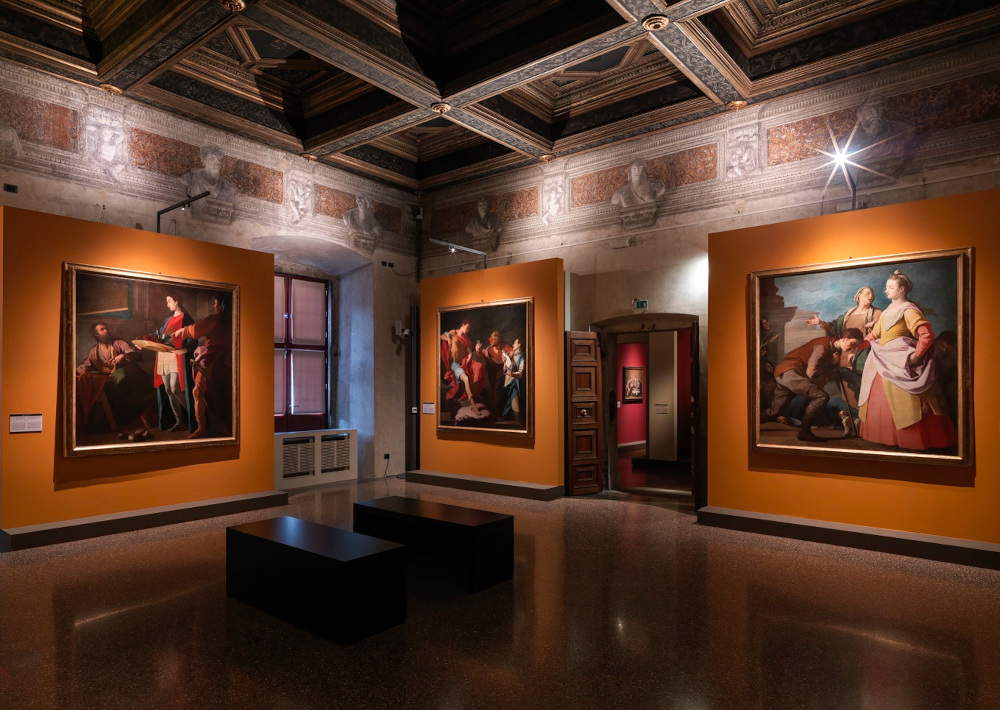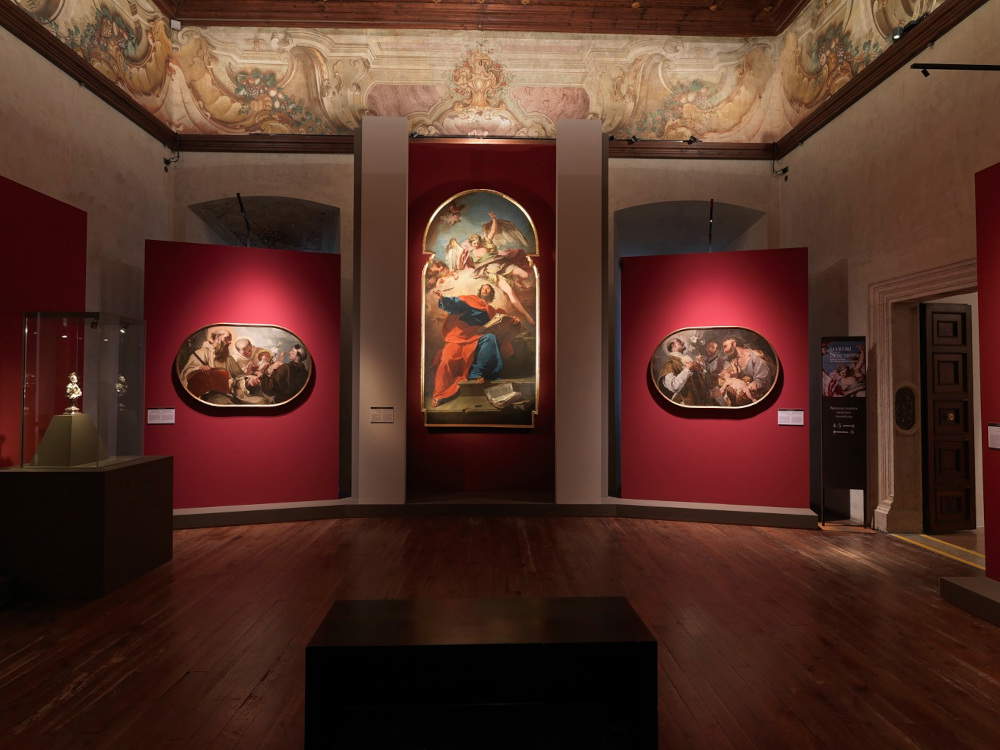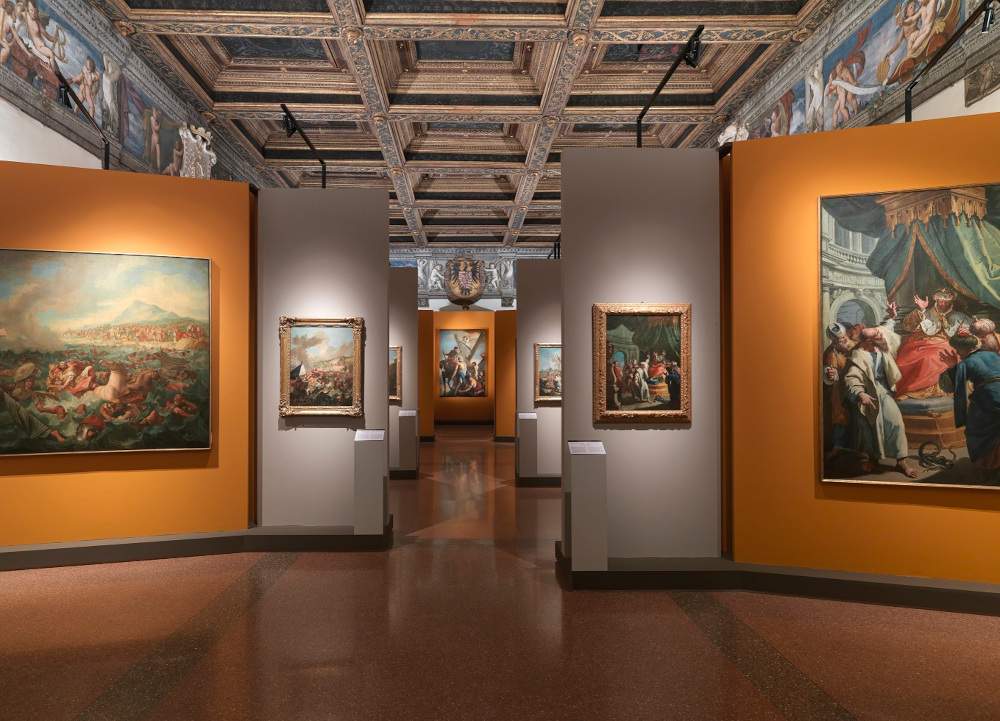An exhibition on Venetian painting in Trentino in the late 17th and 18th centuries at the Buonconsiglio Castle
Until October 23, 2022, the Castello del Buonconsiglio in Trento is hosting the exhibition I colori della Serenissima. Eighteenth-century Venetian Painting in Trentino, curated by Andrea Tomezzoli, Denis Ton and Laura Dal Prà.
For centuries, the Episcopal Principality of Trent played a hinge role between the Italian and German worlds, thus determining a composite artistic language influenced by different artistic experiences. Prominent among these was Venetian painting, appreciated not only in the Principality but also more generally in the Tyrol and throughout the imperial confederation. The exhibition therefore aims to present a picture of the presence of artists and works by Venetian masters in the territories of the Prince-Bishopric or South Tyrol between the late seventeenth century and the eighteenth century, revealing anintensity of exchanges made possible by historical motivations, taste, interest and cultural formation of the patrons, as well as by the relations that the local communities had with the main centers of the Venetian Republic.
The exhibition intends to enhance many works already present in the territory, and the same bishop’s commission for the decoration of the Buonconsiglio Castle constitutes the first stage of a progressive focus on the components of Trentino figurative culture in the lands of the episcopal principality during the Baroque era.
“The proximity to the territories of the Serenissima,” explains Buonconsiglio Castle director Laura Dal Prà,“inevitably led to a series of very close ties, according to routes traveled in a twofold direction: on the one hand with the arrival of works of art sent from Venice or with the presence of Venetian artists in Trentino; on the other hand with training stays of painters from the Episcopal Principality in the two main centers of the Venetian Republic, namely the capital and Verona. It is, in fact, relevant the power of attraction exercised throughout the century by the Veronese School, which in 1764 organized itself into a real Academy of painting, officially recognized and led by the authoritative personality of Giambettino Cignaroli. But multiple factors contributed to corroborate these exchanges, leading to a situation as complex and stratified as ever. Several territories of the Principality of Trentino were, for example, subject to the religious authority of the Venetian bishops, not to mention that entire communities moved to Venice from Trentino, then the interests in the Trentino area of some important families, the Giovanelli in particular, enfeoffed in Valsugana from 1662. A context that transformed the episcopal principality and its territory into a crossroads of experiences that marked its artistic climate, making it a fertile ground for comparison and growth, including for local artists.”
The exhibition project intends to focus attention first of all on the construction site of the Santissima Annunziata with Francesco Fontebasso’s frescoes. Despite the severe damage suffered during World War II, historical photos and what has come down to us attest to a complete mastery of space by the painter, as well as an incredible vocation for chromatic vivacity, emphasized by iridescence and touch and frayed painting. The manner of the commission and the identity of the intermediary between the artist and the powerful Trentino confraternity remain to be clarified: an encounter that gave shape to an environment where Fontebasso’s frescoes still dialogue with the altars of Cristoforo and Teodoro Benedetti. Special attention is also paid to the reconstruction of the intellectual physiognomy and artistic tastes of Prince-Bishop Francesco Felice Alberti d’Enno, who once again commissioned from Fontebasso, in 1759, the great cycle of biblical subjects for the Castello del Buonconsiglio: a sylloge that will be supplemented for the first time by the preparatory sketches that have recently emerged in private collecting.
The exhibition is meant to be an opportunity to broaden the gaze and reconnect the works on the territory of Fontebasso himself, but also of Giambattista Pittoni and Gaspare Diziani. Above all, the presence of two protagonists of the late 18th-century Venetian painting season, Antonio and Francesco Guardi. The Veronese side makes it possible to focus on two particularly interesting episodes of private collecting: the first linked to the eccentric figure of Simone Brentana, who in the 1730s executed a cycle of five canvases until recently that remained in the Trentino collection of the De’ Negri di Sampietro family; the second features Giambettino Cignaroli, the author of a Susanna and the Old Men commissioned by the Bortolazzi family.
The exhibition is divided into eight sections. It starts with the antecedents, which feature some paintings of the highest quality documenting the season of seventeenth-century Baroque painting in Trentino in its various declinations. A sort of anticipation of themes that will surface throughout the exhibition, characterized by the sending of works of art to their homeland by individual merchants or entire Trentino communities living in Venice. Then follows the section devoted to the 1930s, which recounts the relations between the Episcopal Principality and the Serenissima represented by two important sites: the frescoes in the cathedral created by Louis Dorigny (1654-1742) and the cycle created in 1736 by Francesco Fontebasso (1707-1769) on the ceiling and lunettes of the church of Santissima Annunziata. It then opens a window on private collecting: a cycle of five canvases by Simone Brentana (1656-1742), a well-known Venetian painter by origin and training who had become one of the undisputed protagonists of the Veronese art scene since the end of the 17th century, from the De’ Negri di Sampietro collection, a Trentino family of the small notarial nobility. The fourth section focuses on devotional painting for the decoration of some important altars in churches in the area. This is followed by another section devoted to the activity of Antonio and Francesco Guardi: the Guardi family’s privileged relationship with their homeland (in fact, they came from Mastellina, in Val di Sole) is documented in the exhibition by an important nucleus of paintings. Next, the spectacular cycle of nineteen canvases of a vetero-testamentary subject that Francesco Fontebasso executed in 1759, destined for the Great Hall and the Upper Hall of the Buonconsiglio Castle tower, is recounted. The aim of the exhibition is not only to bring together the surviving canvases of the cycle, currently divided among Castello del Buonconsiglio, Villa Margone in Trento and, perhaps, Castello Sforzesco in Milan, but also the related preparatory models, three of which are now in the Provincial Collections themselves, one in a private Venetian collection and four others on the Genoese antiquarian market. The last two sections are devoted to the eighteenth century, between Veronese classicism and Venetian color, and to one of its protagonists, Francesco Guardi: with the Holy Trinity and Saints Peter and Paul for Roncegno, the last act of his presence in Trentino takes place in 1775. The commission is promoted by the Giovanelli family for the high altar erected by Tommaso Temanza. In fact, a trip by Francesco three years later to take care of family business in Val di Sole leaves traces in a striking series of large drawings, currently in public and private collections. The sheets on display in the exhibition are significant because on the one hand they certify the artist’s interest in pinning down in memory the features of the landscapes of his own family history, but on the other hand they also testify to his irresistible vocation to transfigure the topographical datum according to the internal rules of imagination and artistic autonomy.
The exhibition therefore, through its sections, amply documents for the first time the influence of Venetian art in the valleys of Trentino. Seventy works, many of large dimensions, have come to Trento from museums and collections in Europe and the United States: paintings that adorned palaces and churches in these valleys and that time, wars, and family events have dispersed. The curators have gone on their trail, unearthing them in museums or on the international antiques market, managing to bring them together and, in some cases, reassemble them, for the exhibition.
For info: www.buonconsiglio.it
 Set-ups of the
Set-ups of the Set-ups of the exhibition The colors of the
Set-ups of the exhibition The colors of the Set-ups of the
Set-ups of the
 |
| An exhibition on Venetian painting in Trentino in the late 17th and 18th centuries at the Buonconsiglio Castle |
Warning: the translation into English of the original Italian article was created using automatic tools. We undertake to review all articles, but we do not guarantee the total absence of inaccuracies in the translation due to the program. You can find the original by clicking on the ITA button. If you find any mistake,please contact us.





























